Quality Brands and Sustainable Food Systems
Edited on
19 July 2021In April 1957, the BBC broadcasted a short report showing a Swiss family harvesting their spaghetti crop from the family tree. Numerous viewers called the station after the coverage, interested in acquiring their trees. This anecdote, recounted by Carolyn Steel in her revealing essay "Hungry City," reflects the tremendous disconnect that was already beginning to develop between consumers and food production.

BBC, Panorama (1957)
In recent decades, different individual and collective, public and private, urban and rural initiatives have been promoting the recovery of this lost relationship and re-localizing production under integrated sustainability criteria. Cities and rural territories in the EU are an active part of this process, often around quality brands, considered instruments capable of generating added value and gaining a position in the global market.
In practice, we sometimes find an oversaturated environment of brands that coexist with hardly any articulation between them or any net generation of positive impacts. A reflection on their performance and evaluation seems timely to contribute to the effective development of sustainable food systems.
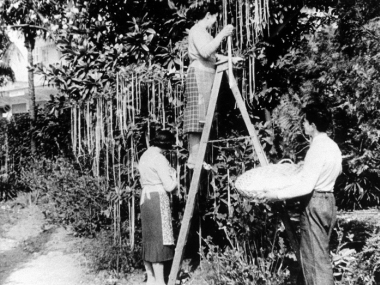
Local values in a global system
The Covid-19 pandemic has highlighted the importance of ensuring access to healthy food for everyone and the risks underlying a globalised food system that is not exempt from various negative externalities.
Many voices call for alternative systems where food production and consumption are aligned with the Sustainable Development Goals, offer solutions to the social, environmental, and economic problems intrinsic to the current agro-industrial system, and contribute to the fight against the adverse effects of Climate Change.
Local, regional, and other types of quality-based brands may sustain territorial food systems. But what kind of quality brands we have, and which are the more appropriate to achieve this challenge?
Mechthild Donner (2016)1 differentiates at least three types of place-based brands:
1) Quality marks recognised within the framework of the European Union. In particular, Protected designation of origin (PDO), Protected geographical indication (PGI), Traditional specialty guaranteed. They generally protect specific products that are not combined with other products and services. Examples include Bordeaux Wines, Parmigiano Reggiano, etc.
2) Institutional brands, whose main objective is to increase local attractiveness to persuade investors, tourists, workforce and generally stimulate economic development, with examples such as I feel Slovenia, Sud de France, North Brabant's regional products (Netherlands), etc.
3) Collective brands aimed at protecting and promoting various specific resources, tangible or intangible, under a common umbrella strategy. Examples: The Szekler Product Trademark from Harghita County, Romania; Cluster de Muntanya, Catalunya (Spain), etc.

Local branding as an enabler of territorial development
Conditions, processes, and dynamics explain this facilitating role of place brands and how the impacts and benefits are generated. The mechanisms can be diverse, according to Donner (2016).
Sometimes, a regional political institution, such as the Région Occitanie in France, has acted as an institutional entrepreneur creating the Sud de France brand to establish a common strategy and enhance the value of agricultural products by promoting the local economy. Based on specific regulations for each of the sectors involved, the brand covers a basket of 10,000 products, including 6,300 wines. These products are presented under three complementary distinctions: Occitanie products produced following the region's sectoral standards, organic products made following EU standards, and products of excellence for all those produced under an EU mark associated with criteria of indication and geographical origin. This case suggests different indicators for quantitative (number of members, sales evolution, degree of satisfaction, etc.) and qualitative analysis (perception of regional identity, sense of belonging, preservation of local production, articulation between actors, etc.) to assess the impact. These initiatives are intended to be sustained in the long term. Their evaluation can be based on analysis criteria related to the logic of public sector interventions and stakeholders' theory.
One of the positive aspects detected in regional branding strategies is their flexibility to adapt to site-specific resources and possibilities. Similarly, an important aspect is that in parallel to a territorial marketing process, these brands intervene as a glue between local actors and the identity of the site, fostering the interaction between the public and private sector and the cooperation between members, provoking an assemblage at multiple levels (territorial, societal, structural). This concept of integration proves to be a valuable indicator for analysing the performance of any regional branding strategy and can be monitored through relevant sets of indicators.
Obviously, in a context as diverse as the European Union, the capacity and opportunity to develop food regional branding strategies differ significantly from national, regional, and local conditions and all stakeholders' expectations and cooperation capacity.
Some proposals developed by social entities also play to conserve and promote food value and identity from a territorial and collective perspective. This is the case of the Slow Food eco-gastronomic movement through the Slow Food Presidia. The Presidia sustains quality production at risk of extinction, protects unique regions and ecosystems, recovers traditional processing methods, safeguards native breeds and local plant varieties.

Similarly, the International Institute of Gastronomy, Culture, Arts and Tourism grants recognition to Regions of Gastronomy from Europe. These regions work, in the long-term, to contribute to a better quality of life by raising awareness about the importance of cultural and food uniqueness, stimulating creativity and gastronomic innovation, educating for better nutrition, improving sustainable tourism standards, highlighting distinctive food cultures, and strengthening community well-being. Slovenia and the Portuguese region of Coimbra are the two awarded European Regions of Gastronomy in 2021. Slovenia's commitment to a sustainable gastronomic tourism strategy is based on three pillars - people, nature, and sustainability - and seven criteria: authenticity, efficiency, nature-oriented, waste-free, impeccable, responsible to the environment, and its employees. The Slovenian gastronomic tourism brand covers a total of 24 gastronomic regions, where more than 400 dishes, drinks, and ingredients have been characterised.
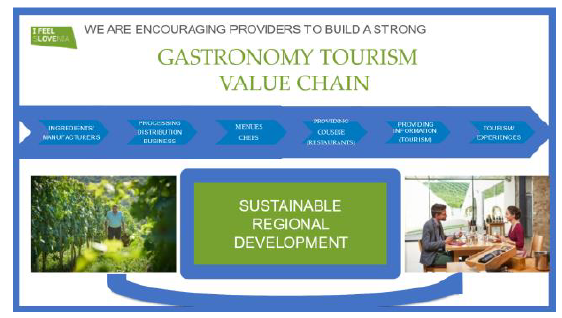
The Coimbra Region, through the CIM Coimbra, articulates its participation in FOOD CORRIDORS, within the URBACT Programme, and celebrates its distinction as a European Region of Gastronomy intending to support short food production and consumption channels, training the actors involved in the gastronomic sector, improving the attractiveness of the tourist offer and supporting local productions, sometimes sustained as Designations of Origin, as in the case of Serra da Estrela Cheeses, producer associations such as the salt producers of the Figueira da Foz salt mines, or private companies that export their products internationally under the Portugal brand, as in the case of Liqueur Beirao. Initiatives that well-articulated, together with others, can bring a coherent territorial strategy in the Coimbra Region.
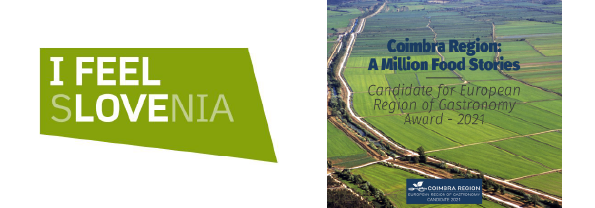
Small actions generating integrated intervention plans
In the framework of URBACT city networks such as FOOD CORRIDORS, any of the three approaches to the concept of "place branding" mentioned above is of interest. Still, the strategy of collective brands is desirable due to the structuring nature of products and actors, in this case of the food system, and its potential contribution to the development of agribusiness and the territory.
Some outstanding cases are found in Tartu County (Estonia) and Gorenjska region (Slovenia), both FOOD CORRIDORS partners. A group of actors from various sectors promotes a collective brand conformed around an identity product, the onion, through a tourist route. The Onion Route, in Tartu County, offers participation in various handicraft workshops and classes to learn to cook traditional food from locally sourced ingredients. More than twenty partners provide their products and experiences in a unique area where two nationalities and three cultures coexist.
Something similar happens in the region of Gorenjska, where the collective mark The Bohinjsko/from Bohinj sign guarantees geographic origin and the high quality of products and services. All products are certified following strict standards and criteria and respecting traditional values, local materials, produce, and ingredients. The Bohinj Quality Centre monitors the development and image of accredited products and provides constant professional help and support to local entrepreneurial initiatives.
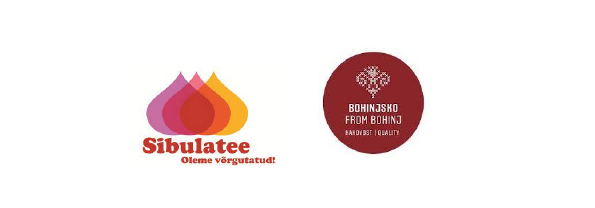
These are undoubtedly compelling examples of how small initiatives can promote an articulation of actors from which to attract regulatory support from the national and regional public sector, test forms of territorial governance, and reinforce the values of identity and the local economy.
They also facilitate regional strategies based on cooperation with other initiatives and neighbouring areas, as in the case of the geographical location of South Estonia, to promote regional cooperation formulas.
Some challenges
Although we don't know a lot about the capacity of these strategies to promote regional brands, we perceive how collective place brands align with specific current social demands that enhance collective strategic action, cooperation, and integration. These principles also coincide with those promoted by URBACT to facilitate integrated urban development in the EU.
Territorial scope and collective work are complex processes, highly dependent on the national political context and local dynamics of cooperation. In a sense, these regional food branding strategies can become an effective governance instrument based on public-private partnerships. Together with an analytical perspective based on the concept of foodshed2, they can be appropriate resources for determining regionally based, resilient, and sustainable food systems as proposed by the FOOD CORRIDORS network.
Place and regional branding approaches can be conceived more broadly than marketing strategies, giving room for analysis of the multiple levels of integration that these strategies can bring about. In the EU context of ambitious policy proposals and financial support around economic recovery, food, and the green economy, regional quality brands can be at the forefront of a profound movement to revive regional food systems. Some final recommendations can facilitate this transition:
- Combining the local or regional strategy with an overarching national or European alternative will stimulate multiple solidarities. The role of territories organised in basins, districts, regions under a sustainable production and consumption logic works in this direction.
- Deepening knowledge, research, and implementation of agro-ecological and regenerative methods for the environment and facilitating circularity between materials and products will be critical elements of this change.
- Democratising the system's governance under public and social purpose and an intervention that accompanies private initiative will give coherence to the whole model.
- Experimenting with small solutions, exchanging knowledge, and social innovation will enable and drive the transition efficiently.
Finally, it is highly recommended to keep alive education and promotion on healthy diets and all kinds of initiatives that contribute to achieving the SDGs and making European cities and rural areas interconnected and resilient spaces.
But regenerating the food system requires a paradigm shift based on a cultural change capable of building bridges between producers and consumers, between consumers and food. In this way, hoaxes such as the one released by the BBC in 1957 will be short-lived, merely a smile.
1 Donner, M (2016) Understanding place brands as collective and territorial development processes. (Accessed on May 17, 2021, https://library.wur.nl/WebQuery/wurpubs/fulltext/379598)
2 Schreiber, K. et al. (2021) Quantifying the foodshed: a systematic review of urban food flow and local food self-sufficiency research. (Accessed on May 17, 2021, https://iopscience.iop.org/article/10.1088/1748-9326/abad59/meta)
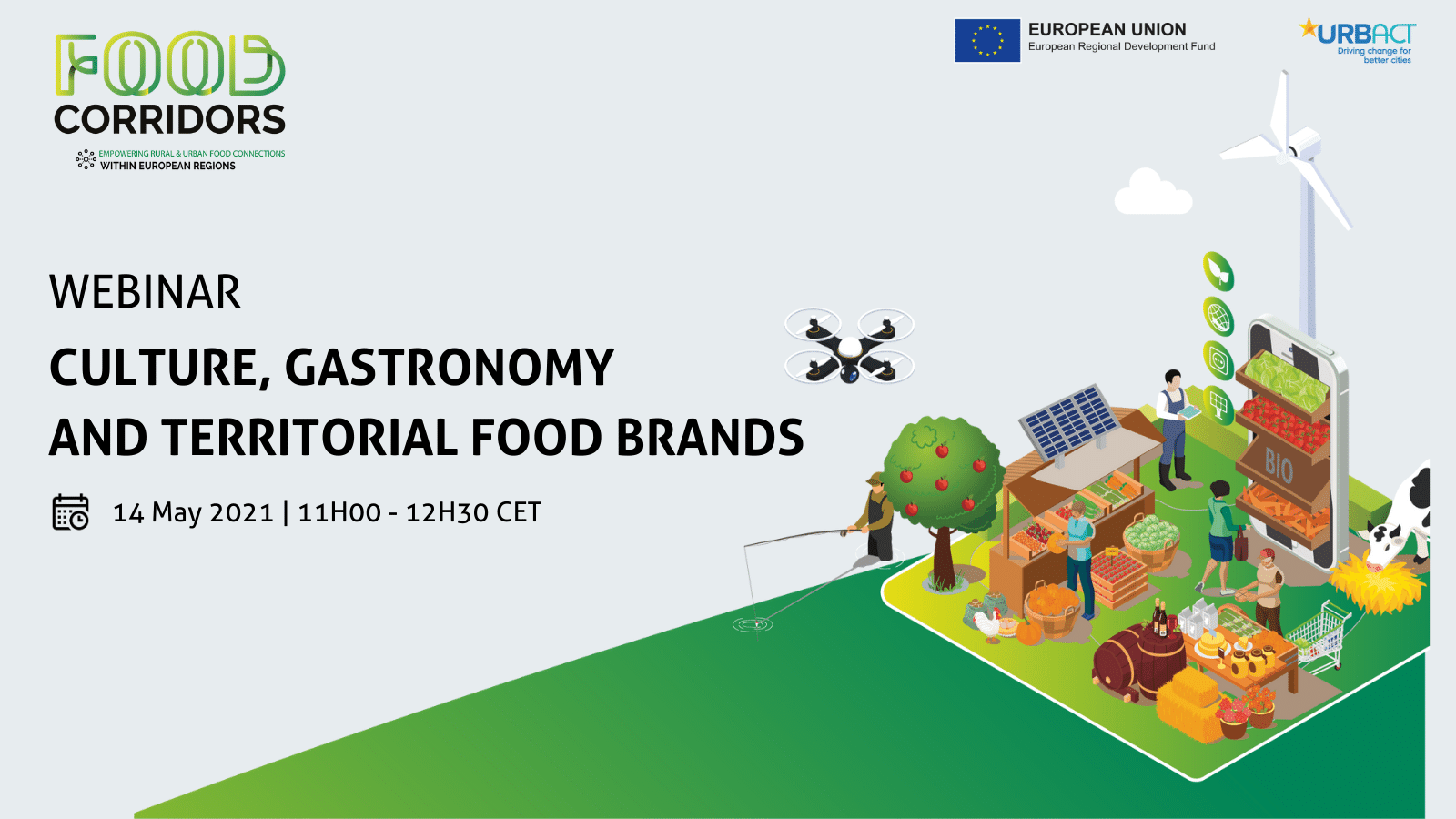
This article has been written in parallel to a Thematic Webinar on the topic organised by the FOOD CORRIDORS Project partner network on May 14 2021. Resources from the event can be accessed at this link.
* Antonio Zafra is the Lead Expert of the FOOD CORRIDORS network
 Submitted by Antonio Zafra on
Submitted by Antonio Zafra on




